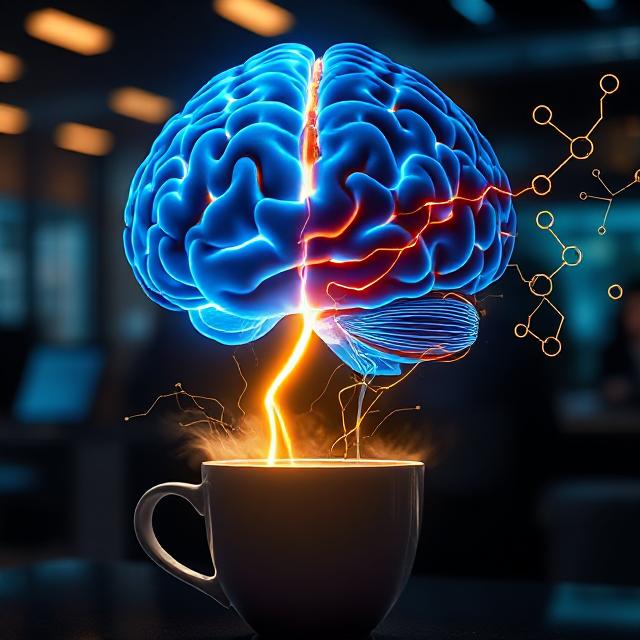
Table of Contents
How Caffeine Shifts Beta Waves and Alertness
Caffeine is the world’s most widely consumed psychoactive substance—and its effects on mental energy, focus, and mood are well-documented. But what’s happening beneath the surface?
At the neural level, caffeine doesn’t just “wake you up.” It alters your brainwave profile, especially boosting beta wave activity—the rhythm associated with focused attention, active thinking, and sensory engagement.
In this post, we’ll explore:
- How caffeine shifts beta waves
- The connection between beta dominance and alertness
- The limits and risks of pushing beta too far
- Strategies to optimize caffeine timing for clarity without crashing
Let’s decode how this daily ritual changes your mental rhythm—and how to use it wisely.
☕ What Caffeine Does to the Brain
Caffeine works by blocking adenosine, a neurotransmitter that builds up during wakefulness and promotes drowsiness. When adenosine is blocked:
- Dopamine and norepinephrine are amplified
- Neural firing speeds up
- Cortical activation increases
- Brainwave frequencies shift upward, with beta activity dominating
Caffeine doesn’t create energy—it prevents you from feeling tired and boosts attention circuits.
🔬 Caffeine and Beta Waves: The Science
Beta waves (13–30 Hz) are linked to:
- Analytical thinking
- Decision-making
- Concentration
- External focus
Caffeine enhances mid- to high-beta activity, particularly in the frontal lobes, where executive functions like planning and working memory live.
In EEG studies, moderate doses of caffeine (50–200 mg) show:
- Increased beta power in awake participants
- Shorter reaction times on cognitive tasks
- Enhanced focus under fatigue conditions
In short: caffeine shifts your brain from idle to active by amplifying beta wave dominance.
⚠️ The Downside of Excess Beta
While beta is essential for productivity, too much beta for too long has downsides:
- Racing thoughts
- Irritability or anxiety
- Jaw clenching or fidgeting
- Mental rigidity or tunnel vision
When caffeine is overused or mistimed (e.g. late in the day), it can lock the brain in high-beta mode, disrupting emotional flexibility and sleep.
The ideal state for studying or working is often a blend of alpha and beta—calm focus—not frantic stimulation.
🕒 Best Timing for Beta Boosts
To maximize focus and minimize side effects:
- Morning (8–10 a.m.): Best window for a primary dose, when cortisol is naturally higher
- Early afternoon (1–2 p.m.): Optional microdose to counter the post-lunch dip
- Avoid after 3 p.m.: Can suppress evening theta and delta waves, delaying sleep
Use small, intentional doses—aim for cognitive clarity, not overstimulation.
🎯 Smart Caffeine Stacking for Beta Balance
Consider pairing caffeine with L-theanine (found in green tea or as a supplement):
- Smooths the rise in beta waves
- Preserves alpha activity
- Reduces jittery or anxious side effects
Other effective pairings:
- Creatine: Enhances ATP regeneration for sustained focus
- Electrolytes: Supports nervous system conduction under stimulation
- Rhodiola (low-dose adaptogen): Promotes alert calmness
🧭 Final Thought: Respect the Rhythm
Caffeine is a neuroelectric amplifier—it sharpens beta wave activity and unlocks temporary cognitive power. But without awareness, it can disrupt your natural brainwave cycle, leaving you wired, tired, and unfocused.
Use caffeine to support alertness, not override your rhythms.
Support beta—but don’t suppress alpha, theta, or delta.
Use it with precision, and your brain will thank you.
